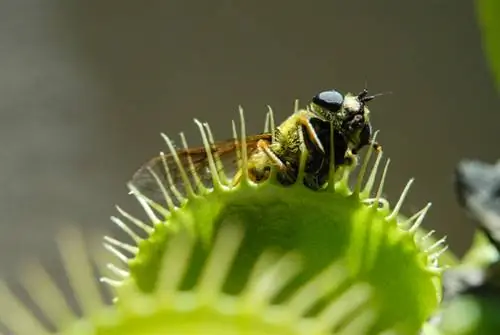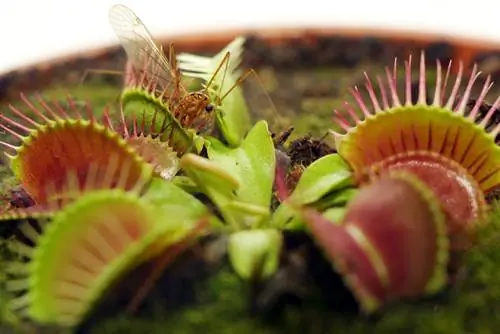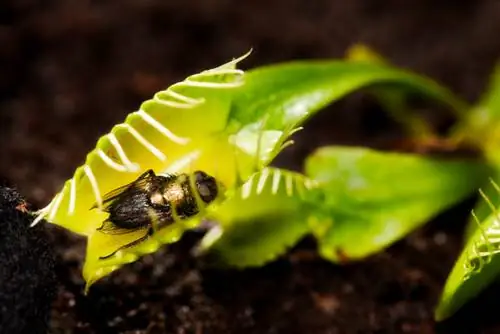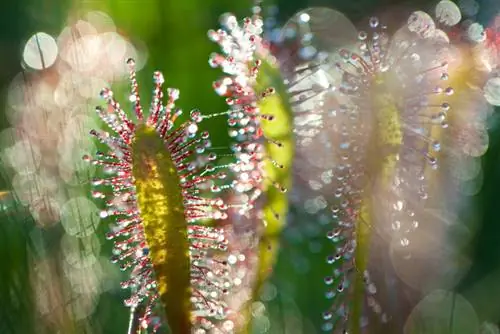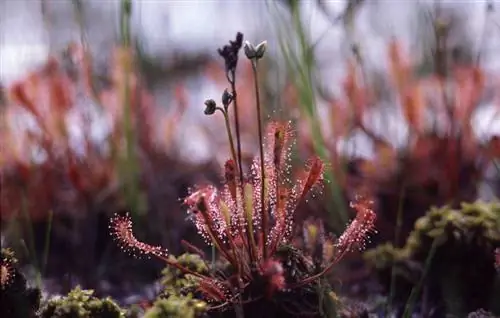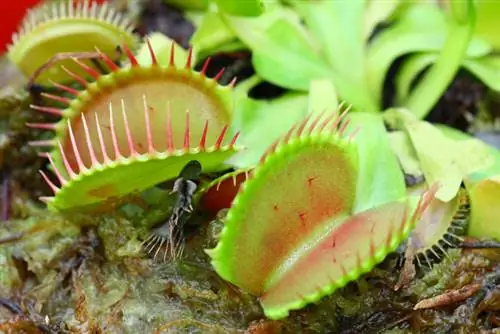- Author admin [email protected].
- Public 2023-12-16 16:46.
- Last modified 2025-06-01 06:02.
Carnivorous plants (carnivores) are scary to some plant lovers. Some people shy away from breeding because they fear they won't find enough food for the plants. This concern is unfounded, because you do not have to and should not feed carnivorous plants.
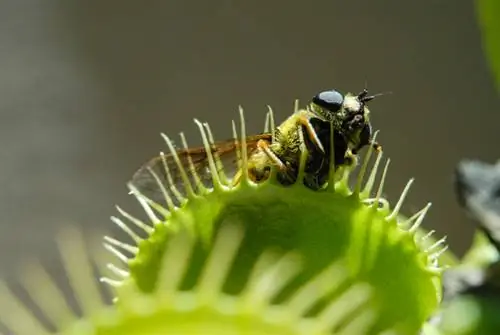
Do carnivorous plants need to be fed?
Should carnivorous plants be fed? As a rule, feeding is not necessary because they provide themselves with insects and there are enough nutrients in the planting substrate. If feeding is carried out occasionally, only live insects, of appropriate size and individually, should be offered.
Why do some plants eat insects?
Almost all carnivorous plants grow in locations where there are few nutrients in the soil. In order to provide them with sufficient supplies, they are equipped with various types of traps in which they catch and digest insects.
You don't have to feed carnivorous plants in the house
If you grow carnivorous plants indoors, they will feed themselves with insects. There is a sufficient supply of prey in every household.
In addition, the carnivores' planting substrates contain enough nutrients, usually far too many. They are completely sufficient to feed the plants, even if there are hardly any insects flying around in winter.
If you also feed your carnivorous plants with insects, there will be an oversupply of nutrients that the plants are not getting. In the worst case, they even die.
Feeding carnivores - the right way
The breeding of carnivorous plants is so fascinating for a reason. Just for illustrative purposes, some plant lovers might want to feed the carnivores at least now and then.
You can do a lot of things wrong when feeding. It is important that you never give too many insects at once. The size of the prey also plays a role.
How to feed correctly
- Only feed live insects
- only one insect at a time
- Don't choose booty too big
Even if it is tempting to put dead flies, mosquitoes or ants in the traps - for the sake of your plant, you should not do that. The catching devices only begin to work properly when the insect in the trap is still moving. Only then will the digestive secretions be released.
The bigger the traps are, the larger the insects you feed can be. A large pot of pitcher plant will also handle a wasp. Such prey is far too large for the Venus flytrap's folding traps. Here the insect should not be larger than a third of the size of the trap.
Animal foods such as meat, milk or cheese do not belong in the traps. They cannot be digested and cause the traps to rot. You should also avoid touching the safety gear with your fingers.
Venus flytraps only open seven times
You need to be extra careful when feeding Venus flytraps. The folding traps can open a maximum of seven times. Then they die. If you feed too often or too much at once, the traps will collapse even sooner.
Tip
The catching devices of different carnivores differ considerably. Venus flytraps capture insects with folding traps, while pitcher plants form deep pitcher-like traps. Sundews and butterworts catch insects with their leaves.

